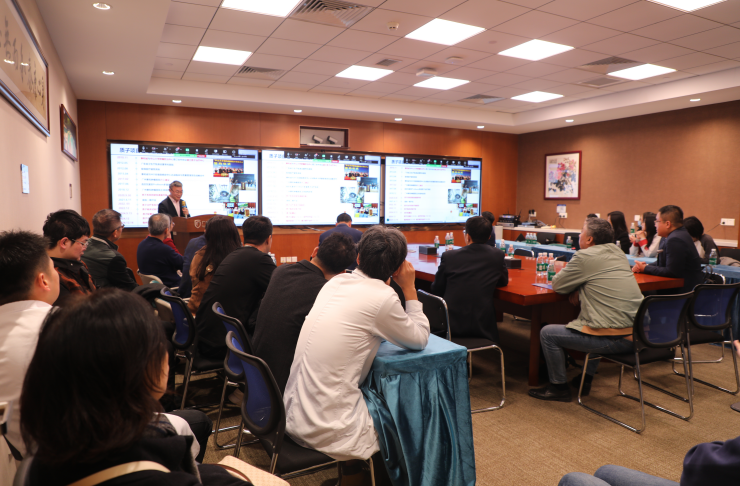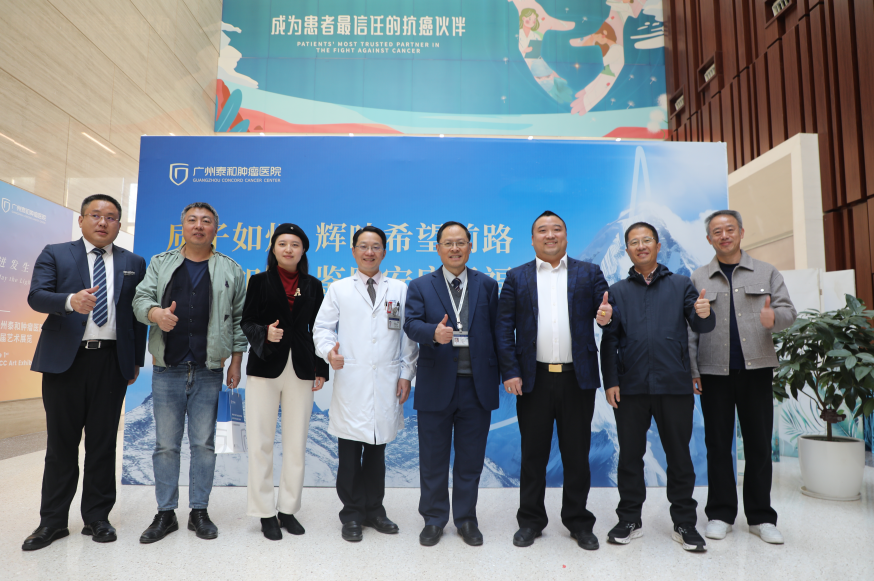International Forum on Cutting - edge Proton Radiotherapy Technology Successfully Held: Gathering of Chinese and Foreign Experts, Integration of Research and Clinical Practice
On December 21, the inaugural International Forum on Advanced Proton Radiotherapy Technologies and the Training Course on the Clinical Application and Standardization of Specialized Radiotherapy Techniques was held at Guangzhou Concord Cancer Center.
The forum series is hosted by the China Anti-Cancer Association’s Training Base for Integrated Clinical Oncology, the Cancer Science Popularization and Education Training Base, and the Oncology Clinical Research and Translation Base, with Guangzhou Concord Cancer Center serving as the organizer.
The forum centered on academic exchanges around the clinical application of proton therapy technologies. Several renowned experts from China and the United States shared their latest research findings and clinical practice experiences.

Professor Terence T. Sio from Mayo Clinic presented the latest advances in proton therapy for lung cancer, while Professor Heng Li from Johns Hopkins University School of Medicine discussed long-term toxicity assessments in proton therapy for pediatric brain tumors.
Professor Terence T. Sio outlined the development of proton therapy at Mayo Clinic, with a particular focus on the rationale and treatment philosophy behind the use of Proton Beam Therapy (PBT) for thoracic tumors such as non-small cell lung cancer (NSCLC). He highlighted the potential of PBT to improve the therapeutic ratio and enhance treatment outcomes.
In his presentation, Professor Sio also provided an in-depth analysis of recent technological advances in proton therapy—such as the application of artificial intelligence in radiotherapy—and discussed the complexities of integrating proton therapy with immunotherapy in lung cancer treatment. He emphasized that with the accumulation of clinical trials and real-world data, the benefits of proton therapy for NSCLC are expected to be further substantiated.
Professor Heng Li’s presentation covered two key areas: (1) the correlation between longitudinal changes in substructure diffusion tensor imaging (DTI) and neurocognitive outcomes in pediatric brain tumor patients, and (2) the relationship between proton therapy linear energy transfer (LET), relative biological effectiveness (RBE), and the risk of radiation necrosis in pediatric infratentorial brain tumors.
His findings highlighted that longitudinal imaging techniques provide an important tool for assessing long-term toxicities following radiotherapy in children with brain tumors. By continuously monitoring imaging changes over time, clinicians can more accurately evaluate tissue responses and toxicity at different post-treatment stages. These analyses offer valuable scientific evidence to optimize proton therapy protocols, reduce side effects, and improve patient outcomes.
As a leading domestic expert in proton therapy, Professor Fu Shen of Guangzhou Concord Cancer Center presented the latest research findings on proton and heavy-ion radiotherapy for prostate cancer. He noted that compared with the United States, China has higher incidence and mortality rates of prostate cancer, with patients often diagnosed at more advanced stages.
Professor Fu highlighted that clinical studies have shown proton therapy offers advantages in achieving better treatment efficacy with fewer side effects for prostate cancer. However, he emphasized that more prospective clinical studies are still needed to provide stronger validation. In clinical practice, physicians must carefully evaluate which groups of patients are most suitable for proton therapy to help them achieve the greatest possible benefit.
Professor Lin Kong from the Shanghai Proton and Heavy Ion Hospital shared his institution’s experience and research findings on particle therapy for head and neck tumors. He pointed out that due to the complex anatomical structures in the head and neck region, conventional radiotherapy faces certain limitations. By contrast, the dosimetric advantages of proton and heavy-ion therapy allow for more precise dose distribution and better protection of surrounding normal tissues. Clinical practice has demonstrated that particle therapy offers favorable treatment outcomes for head and neck cancers.
The clinical implementation of proton therapy at Guangzhou Concord Cancer Center has officially commenced. At the forum, Deputy Director of Medical Physics, Zheng Yuanshui, shared the hospital’s experience in the physical preparation and technical execution of proton therapy.
Zheng emphasized that precision in proton therapy requires accuracy at every step: precise positioning, precise planning, precise treatment, and precise documentation. Leveraging advanced positioning equipment and motion management technologies, the hospital achieves accurate patient setup. During treatment planning, the team selects the optimal beam arrangement and performs plan optimization and evaluation to ensure precise planning. Throughout therapy, the medical team employs precise positioning, image guidance, and adaptive techniques to guarantee highly accurate treatment delivery.
At the forum, Professor Chen Ming from the Sun Yat-sen University Cancer Center shared the latest research on “Combined Radiotherapy and Immunotherapy for Advanced Non-Small Cell Lung Cancer: Mechanistic Insights and Innovative Models.”
In addition to attending the presentations, forum participants toured the Proton Therapy Center at Guangzhou Concord Cancer Center. The forum was chaired by Professor Qian Chaonan, President of Guangzhou Concord Cancer Center, who also delivered the concluding remarks.

Professor Qian Chaonan emphasized that Guangzhou Concord Cancer Center is equipped with a world-leading proton therapy system. Looking ahead, the hospital plans to regularly host academic sharing sessions focusing on the unique features of proton therapy and clinical experience with its application. Renowned experts from both China and abroad will be invited for in-depth exchanges, aiming to promote the development of clinical proton therapy and foster interdisciplinary collaboration.
